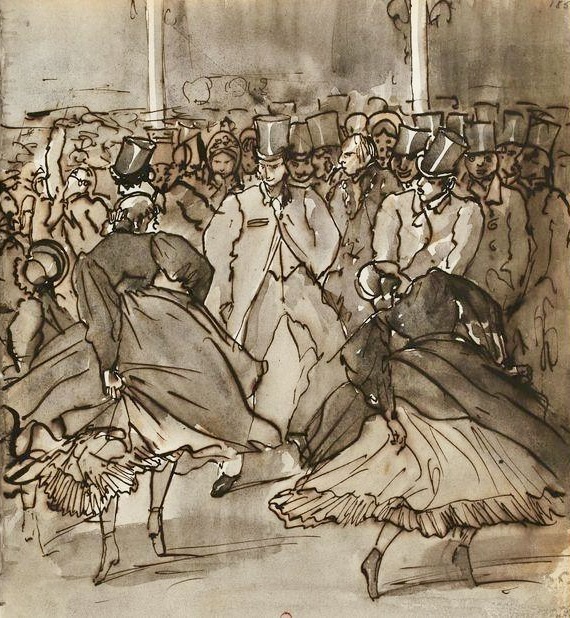
In February 1923, Manuel de Falla, in response to painter Ignacio Zuloaga's letter about the success of his ballet L'Amour sorcier in Paris, encapsulated the profound influence of the city on his career and musical style, stating, "[...] for everything related to my profession, my homeland is Paris".
Was it the enchanting allure of Belle Époque Paris that illuminated the realms of music and visual arts like no other, where dance became the intersection of these two creative forces?
Amongst the artistic geniuses of his era, few captured the interplay of these three art forms quite like Edgar Degas (1834-1917). His renowned canvases and captivating prints showcased the abundant vitality of the musical and choreographic scenes, offering “snapshots” of Paris’ cultural world at the turn of the century.
Tonight, we invite you to discover this extraordinary prolixity in music: Debussy's Prélude à L'Après-midi d'un faune (1891-1894) and Pelléas et Mélisande (1893-1902), Dukas' Ariane et Barbe-Bleue (1899-1907), Ravel's Daphnis et Chloé (1905-1912), Stravinsky's Le Sacre du printemps (1911-1913) and Satie's Parade (1917). The profusion of musical brilliance continued into the interwar period, as Paris witnessed the premiere of masterpieces like Satie's Socrate (1917-1918), Ravel's La Valse (1919-20), Stravinsky's Les Noces (1923), Falla's Les Tréteaux de maître Pierre (1919-1923), the ballet L'Amour sorcier (1925), and Ravel's Boléro (1928).
Unsurprisingly, ballet music takes centre stage in this selection. An emblematic figure and one of the greatest impresarios of the 20th century, Sergei Pavlovich Diaghilev (1872-1929) emerges as a driving force behind iconic balles like Daphnis et Chloé, Le Sacre du printemps and Parade, as well as Debussy's Jeux (1912-13).
In 1907, he organized five concerts of Russian music in Paris, followed by a spectacular production of Mussorgsky's opera Boris Godunov at the Théâtre National de l'Opéra de Paris in 1908, starring Feodor Shalyapin in the titular role. Building upon these successes, Diaghilev further enchanted audiences with Russian opera and ballet seasons at the Théâtre du Châtelet in 1909 and 1910. These endeavors laid the foundation for his legendary Ballets Russes, established in 1911. Until 1929, the Ballets Russes shone as an era of unparalleled brilliance, intertwining ballet with other art forms in a remarkable fusion.
Lose yourself in the enchanting artistic ambiance of this transformative period, where a myriade of connections intertwined not only between different art forms but also across various currents and eras. Consider the works of Ravel and Debussy, which undoubtedly foreshadowed the dawn of 20th-century modernity. And wouldn’t you say that Degas’ prints ressemble works of photography?
We wish you a wealth of artistic discoveries.